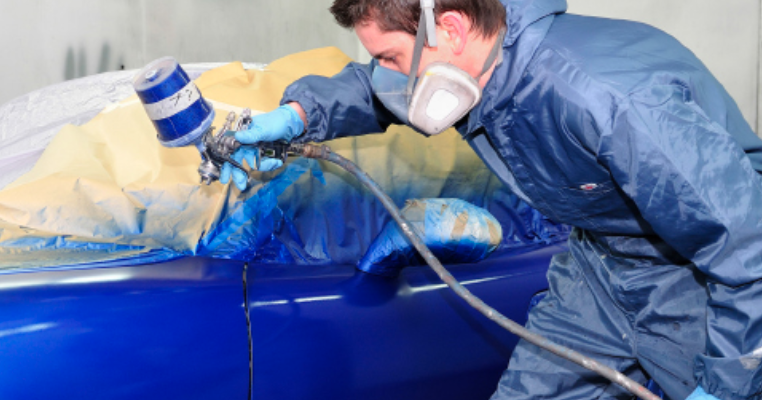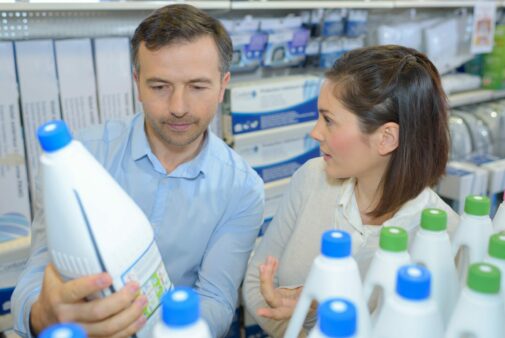Key Points/Overview
MEK is a liquid solvent used in surface coatings, adhesives, printing inks, chemical intermediaries, magnetic tapes and lube oil dewaxing agents. It is also a natural component of many foods such as apples juice, beans, chicken and honey.
MIBK has a variety of uses including as a chemical intermediate, an alcohol denaturant and in the extraction of rare metals. It is also used as a solvent and food additive to synthetic flavorings.
In 2005 the EPA removed MEK from the list of toxic air pollutants. Current use of MIBK in personal care products is very limited and considered safe for use in nail polish removers and as an alcohol denaturant in cosmetic products.
Workplace controls for MEK, MIBK, MO and isophorone such as wearing personal protective equipment (PPE) can help reduce exposure. OSHA and the National Institute for Occupational Safety and Health (NIOSH) have set exposure limits for these chemicals.
Uses & Benefits
Ketones play an important role in many of the products we use every day. Automotive finishes, wood coatings and inks are just some of products developed using ketones.

Methyl ethyl ketone (MEK)
MEK, also known as 2-butanone, is a liquid solvent used in surface coatings, adhesives, printing inks, chemical intermediaries, magnetic tapes and lube oil dewaxing agents.
MEK is also a common solvent that can be formulated into other products or purchased at full strength. It is a highly efficient and versatile solvent for surface coatings. Because of its effectiveness as a solvent, MEK can be especially valuable in formulating high solids coatings, which help to reduce emissions from coating operations.
- Printing inks – MEK is used as a solvent in dry erase markers; it is the ingredient that enables the ink to flow onto the whiteboard. MEK can dilute many different pigments and its low viscosity helps the ink to flow.
- Solvent – MEK is used as an extraction solvent for fats, oils, waxes and resins from food and food ingredients.2 For example, it is used to decaffeinate tea and coffee, and is also used as an extraction solvent in the processing of foodstuffs and food ingredients, e.g., in fractionation of fats and oils, and as a synthetic flavoring agent for some foods and pharmaceuticals.3 It is also used as a chemical intermediate in the manufacture of pharmaceuticals and other products.
- Sterilizer for medical equipment – MEK is used as a sterilizer for bacterial spores on surgical instruments, hypodermic needles, syringes and dental instruments.

Methyl isobutyl ketone (MiBK)
MiBK, also known as 4-Methyl-2-pentanone, has a variety of uses, including as a chemical intermediate, an alcohol denaturant and in the extraction of rare metals. Other uses include:
- Solvent – MiBK can be used to dissolve resins used in paints, inks, lacquers and other types of surface coatings. It is used as a solvent for manufacturing4 a range of products, including paints, rubbers, gums, resins, varnishes, lacquers, nitrocellulose, pharmaceuticals5, other chemicals and industrial cleaners.
- Food additive – MiBK is used as an additive to synthetic flavorings to help enhance their potency, and as a flavoring agent for foods and pharmaceuticals.6 MIBK is also an FDA-approved indirect additive for adhesives, paper and paperboard, and polymers used in food packaging applications.7

Mesityl oxide
Mesityl oxide (MO) is used8 in paint removers, as a solvent for plastics, and as an insect repellent.

Isophorone
Isophorone is used as a solvent in some printing inks, paints, lacquers, and adhesives. It is also used as an intermediate in the production of certain chemicals.9

Safety Information
MEK Exposure and Safety Information
MEK is a natural component of many foods such as apple juice, beans, chicken and honey. MEK may also be found in soil and water near some hazardous waste sites. Other sources of potential exposure include tobacco smoke, and volatile releases from building materials and consumer products. It is also released into the air from car and truck exhausts.2
In 2005, the U.S. Environmental Protection Agency (EPA) removed MEK from the list of toxic air pollutants and concluded that “potential exposures to MEK emitted from industrial processes may not reasonably be anticipated to cause human health or environmental problems.”10
MiBK Exposure and Safety Information
Occupational exposure to MiBK may occur by inhalation or skin and eye contact.4 Workplace controls, such as enclosing operations and/or providing local exhaust ventilation at the site of chemical release, and wearing personal protective equipment can help reduce exposure to MiBK.11
Various government agencies, including the American Conference of Governmental Industrial Hygienists (ACGIH), the National Institute for Occupational Safety and Health (NIOSH) and the U.S. Occupational Safety and Health Administration (OSHA) have set occupational exposure limits for MIBK. OSHA has set the time weighted average exposure limit as 50 parts per million over an 8-hour work shift and concluded that this set exposure limit can protect workers from health effects due to occupational exposure.12
Consumer exposure to MiBK may occur by inhalation and skin contact while using consumer products containing this chemical. Current use in personal care products is very limited, and MIBK is considered safe for use in nail polish removers and as an alcohol denaturant in cosmetic products.13
MiBK may be released into the environment in effluent and emissions from its manufacture and use, in exhaust gas from vehicles, and from land disposal of waste that contains this compound.
MO and Isophorone Exposure and Safety Information
Short-term industrial or occupational exposure to MO can occur through inhalation, ingestion and skin and eye contact. Short-term exposure can irritate and burn the skin and eyes, irritate the nose, throat and lungs, and may cause headaches, sleepiness and loss of coordination.14
To prevent or minimize exposure to skin or eyes in occupational settings, workers should use appropriate personal protective equipment.
Additionally, OSHA and NIOSH have both set permissible workplace exposure limits for MO that facilities manufacturing the chemical are required to follow.15 OSHA has set a permissible exposure limit of 140 milligrams of isophorone per cubic meter of air (140 mg/m³) for an 8-hour workday in a 40-hour workweek.16
Major sources of airborne isophorone may occur in the printing and metal coating industries, as well as coal fired power plants. People who work with inks, paints, lacquers and adhesives that contain isophorone may be exposed to low levels of the chemical through inhalation.17 To help minimize exposure to skin or eyes, workers should use appropriate personal protective equipment.
Sources
- The Chemistry Blog: https://www.chemicals.co.uk/blog/what-are-the-uses-of-methyl-ethyl-ketone#uses_of_methyl_ethyl_ketone
- NIH National Library of Medicine: Methyl ethyl ketone | C4H8O – PubChem (nih.gov)
- Methyl Ethyl Ketone – Major Uses (nih.gov)
- EPA: https://www.epa.gov/sites/production/files/2016-09/documents/methyl-isobutyl-ketone.pdf
- NIH National Library of Medicine: https://pubchem.ncbi.nlm.nih.gov/compound/Methyl-isobutyl-ketone?form=MY01SV&OCID=MY01SV&form=MY01SV&OCID=MY01SV#section=Uses
- NIH National Library of Medicine: https://pubchem.ncbi.nlm.nih.gov/compound/Methyl-isobutyl-ketone#section=Biological-Half-Life
- National Center for Biological Information: https://www.ncbi.nlm.nih.gov/books/NBK373195/
- National Library of Medicine https://pubchem.ncbi.nlm.nih.gov/compound/Mesityl-oxide
- NIH National Library of Medicine: https://pubchem.ncbi.nlm.nih.gov/compound/Isophorone?form=MY01SV&OCID=MY01SV
- EPA: Modifications To The 112(b)1 Hazardous Air Pollutants | Technology Transfer Network Air Technical Web site | US EPA
- New Jersey Department of Health: https://nj.gov/health/eoh/rtkweb/documents/fs/1268.pdf
- NIOSH: https://www.cdc.gov/niosh/pel88/108-10.html
- National Library of Medicine: https://pubmed.ncbi.nlm.nih.gov/15162837/
- CDC: https://www.cdc.gov/niosh/npg/npgd0385.html
- New Jersey Dept of Health and Senior Services: Hazardous Substance Fact Sheet for Mesityl Oxide
- ASTDR: https://wwwn.cdc.gov/TSP/PHS/PHS.aspx?phsid=761&toxid=148
- EPA: https://www.epa.gov/sites/production/files/2016-09/documents/isophorone.pdf


